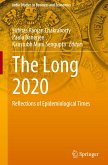Over the past thirty years the incidence of
childhood obesity in the United States has nearly
tripled. The increased instance of childhood
obesity and the subsequent comorbidities, such as
heart disease, type 2 diabetes, hypertension, and
sleep apnea, among other health problems has led to
increasingly high healthcare and social costs. This
work will discuss the market and government failures
that have had the most impact on the increase in
childhood obesity trend and explain why public
policy intervention is necessary and warranted.
Solutions aimed at curbing childhood obesity should
be focused on the educational arena, primarily in
schools. Primary education occurs during a
fundamental time for childhood development of tastes
and preferences and has the most potential for
success.
childhood obesity in the United States has nearly
tripled. The increased instance of childhood
obesity and the subsequent comorbidities, such as
heart disease, type 2 diabetes, hypertension, and
sleep apnea, among other health problems has led to
increasingly high healthcare and social costs. This
work will discuss the market and government failures
that have had the most impact on the increase in
childhood obesity trend and explain why public
policy intervention is necessary and warranted.
Solutions aimed at curbing childhood obesity should
be focused on the educational arena, primarily in
schools. Primary education occurs during a
fundamental time for childhood development of tastes
and preferences and has the most potential for
success.








